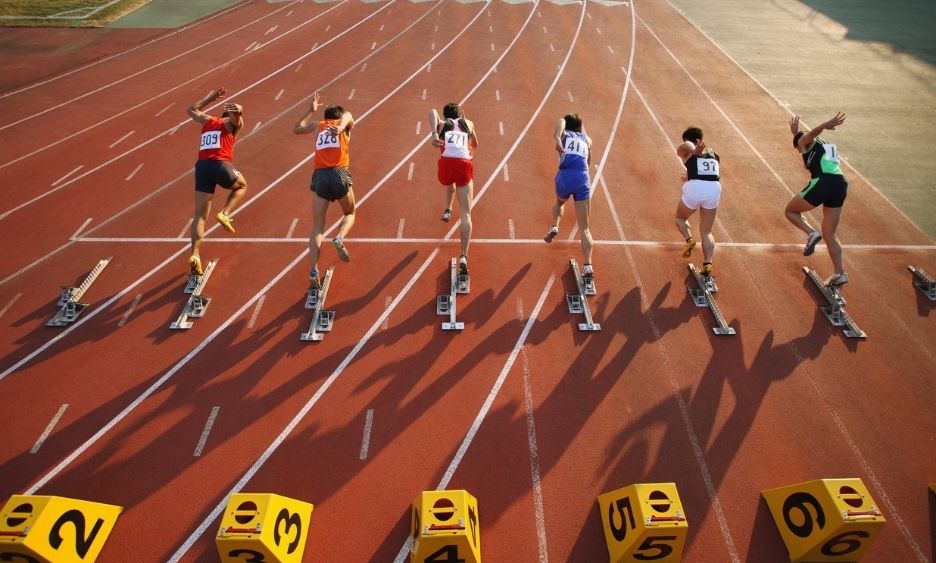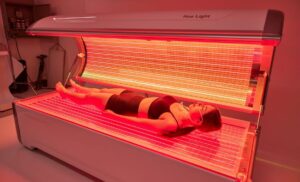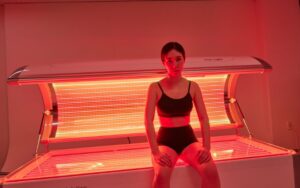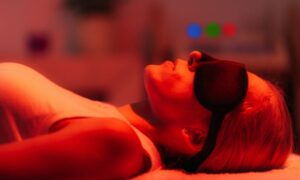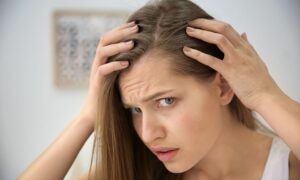Athletes, whether professional or amateur, are always looking for ways to improve performance and speed up recovery. Training sessions, competitions, and intense workouts put significant stress on muscles, joints, and connective tissues. While rest, nutrition, and traditional recovery methods like massage are vital, new technologies are transforming the way athletes recover. One of the most promising of these innovations is red light therapy (RLT).
Red light therapy for athletes has gained popularity in sports medicine and among fitness enthusiasts for its ability to enhance recovery, reduce muscle soreness, and improve overall performance. In this comprehensive guide, we’ll explore what red light therapy is, how it works, its benefits for athletes, safety tips, and how to incorporate it into your training routine.
How Red Light Therapy Supports Athletic Recovery
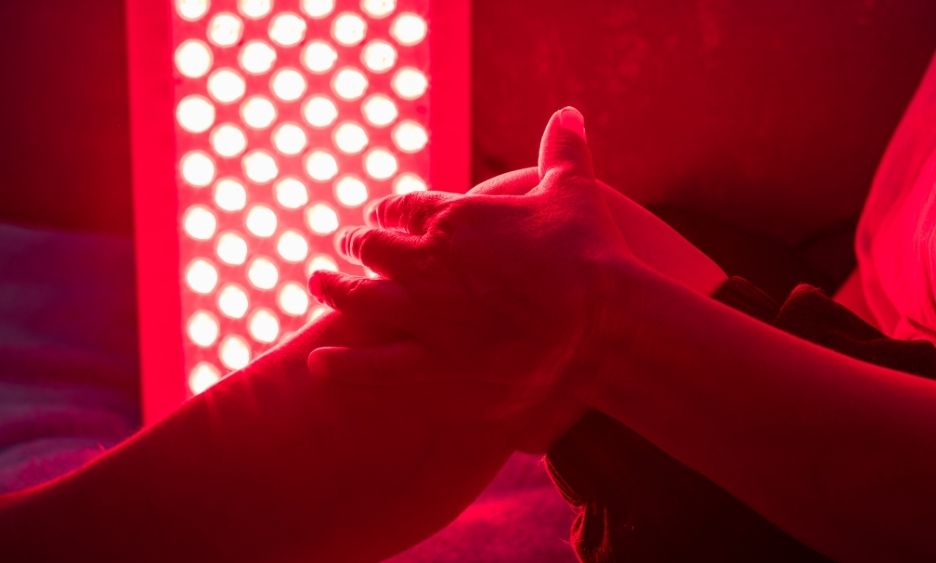
Red light therapy, also called photobiomodulation (PBM), is a non-invasive treatment that uses specific wavelengths of red and near-infrared light to stimulate cellular function. At the cellular level, it helps athletes recover faster and reduce the physical strain caused by intense training. The therapy primarily targets mitochondria, the “powerhouses” of cells, which are responsible for producing energy. By stimulating these cellular powerhouses, RLT boosts energy production and enhances the body’s natural repair processes, helping athletes recover more efficiently.
Reduces Muscle Fatigue and Soreness
After a rigorous workout, muscles experience microscopic damage, which can lead to delayed onset muscle soreness (DOMS). Red light therapy increases ATP production, the energy cells use to repair themselves, which accelerates the healing of damaged muscle fibers. As a result, athletes often report reduced soreness and faster recovery compared to relying on rest alone. Studies have shown that consistent RLT sessions help muscles heal more quickly, allowing for smoother training cycles and less discomfort.
Enhances Circulation and Oxygen Delivery
RLT also promotes the production of nitric oxide, a molecule that helps dilate blood vessels. Improved circulation ensures that muscles receive more oxygen and essential nutrients, which speeds up the healing process. Additionally, better blood flow helps remove metabolic waste from muscles, reducing fatigue and supporting quicker post-exercise recovery.
Accelerates Repair of Muscle and Connective Tissues
Red light therapy penetrates deeper than just the muscle surface, reaching tendons, ligaments, and joints. It stimulates collagen synthesis, which is crucial for repairing connective tissues and maintaining joint health. Athletes recovering from minor injuries, overuse, or chronic stress on joints benefit significantly from regular RLT treatments, as it helps restore tissue strength and flexibility.
Reduces Inflammation and Oxidative Stress
Intense exercise can create oxidative stress, which damages cells and slows recovery. Red light therapy boosts the activity of antioxidants within cells, helping to reduce inflammation and counteract oxidative damage. By managing these stressors, RLT not only aids in faster recovery but also helps prevent overtraining injuries, supporting long-term performance and athletic resilience.
Red Light Therapy for Muscle Recovery
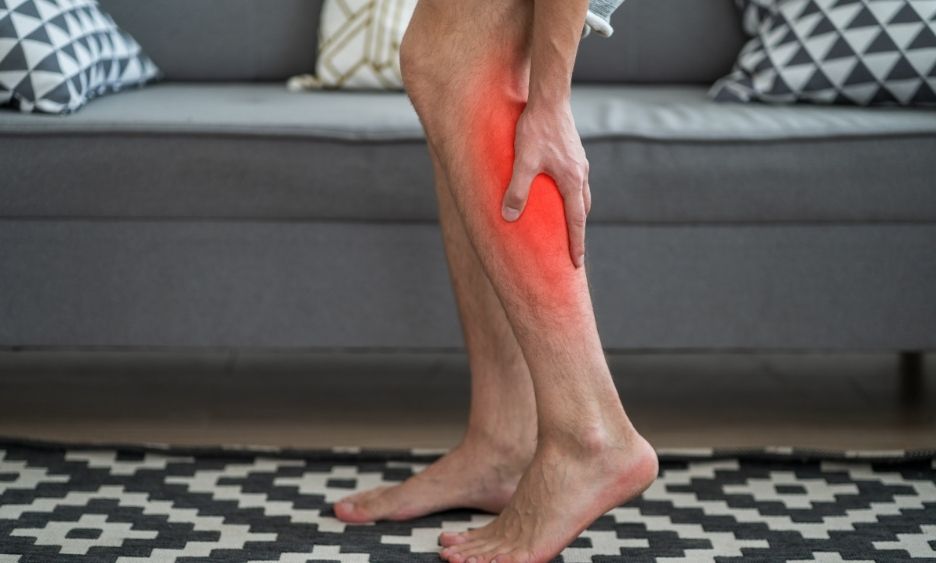
Red light therapy (RLT) is increasingly recognized as a powerful tool for supporting muscle recovery, particularly after intense workouts. Strenuous exercise can leave muscles sore, stiff, and fatigued, which may limit performance and slow training progress. RLT works at the cellular level to accelerate healing, improve circulation, and enhance overall muscle function, helping athletes recover more efficiently.
Faster Recovery After Workouts
During high-intensity training, muscle fibers sustain tiny amounts of damage. Red light therapy stimulates cellular repair by boosting ATP production, the energy that cells need to heal themselves. This accelerated repair process allows athletes to return to training more quickly, minimizing downtime and maintaining consistent performance.
Reducing DOMS (Delayed Onset Muscle Soreness)
Delayed onset muscle soreness (DOMS) is a common consequence of intense workouts, often peaking 24–72 hours after exercise. Studies show that regular RLT sessions can reduce DOMS and help athletes feel less discomfort and maintain a higher training intensity. This makes RLT especially valuable for strength training, endurance sports, and competitive athletes.
Improving Circulation and Oxygen Delivery
Red light therapy enhances blood flow by stimulating nitric oxide production, which relaxes and dilates blood vessels. Improved circulation delivers more oxygen and essential nutrients to fatigued muscles while removing metabolic waste such as lactic acid. This process reduces post-workout fatigue and supports faster, more effective muscle recovery.
Supporting Flexibility and Mobility
Beyond recovery, RLT promotes muscle relaxation and reduces stiffness. Regular treatments help maintain flexibility and joint mobility, which lowers the risk of strains, pulls, and other training-related injuries. Athletes using RLT consistently often report feeling more agile and ready for subsequent training sessions.
How Hue Light Photobiomodulation (PBM) Enhances Athletic Recovery
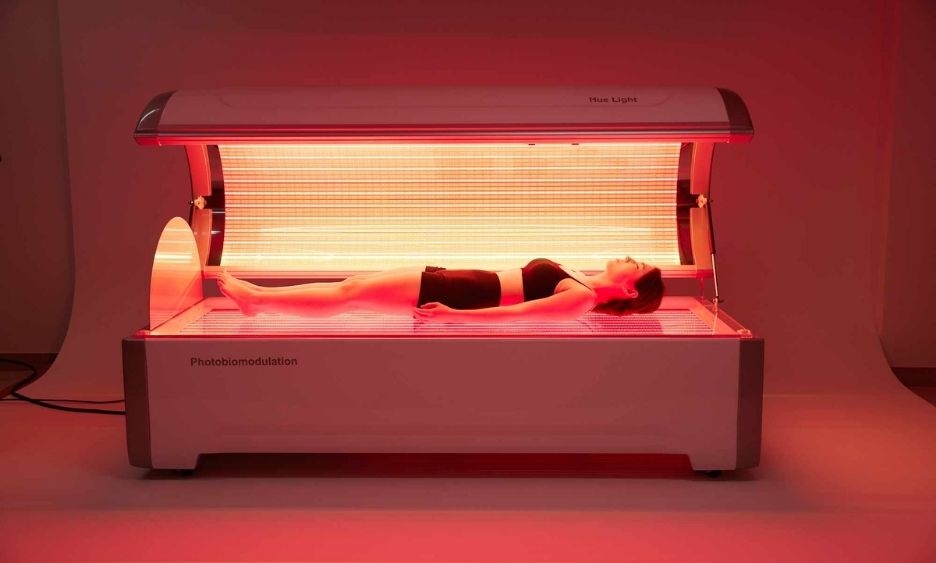 Photobiomodulation (PBM), the scientific term for red light therapy, is rapidly becoming a cornerstone of modern sports recovery. By delivering specific wavelengths of red and near-infrared light, PBM stimulates the body at the cellular level. The light is absorbed by mitochondria, the energy centers of our cells, boosting adenosine triphosphate (ATP) production. This process gives cells more energy to repair muscle fibers, reduce inflammation, and accelerate recovery after intense training sessions.
Photobiomodulation (PBM), the scientific term for red light therapy, is rapidly becoming a cornerstone of modern sports recovery. By delivering specific wavelengths of red and near-infrared light, PBM stimulates the body at the cellular level. The light is absorbed by mitochondria, the energy centers of our cells, boosting adenosine triphosphate (ATP) production. This process gives cells more energy to repair muscle fibers, reduce inflammation, and accelerate recovery after intense training sessions.
For athletes, this means fewer days lost to soreness, faster return to peak performance, and improved long-term resilience. PBM has been shown in clinical studies to reduce delayed onset muscle soreness (DOMS), support tendon and ligament healing, and even enhance endurance by improving oxygen utilization.
Whole-body PBM systems take these benefits further by delivering full coverage in a single session. Instead of targeting only one muscle group, athletes can address multiple areas of strain and fatigue at once. Devices such as the Whole-Body PBM Treatment Device bring professional-grade recovery support directly into training facilities, gyms, or even home environments.
When integrated consistently into a recovery plan, PBM becomes more than just a post-workout tool; it acts as a long-term performance enhancer, helping athletes train harder, recover smarter, and reduce the risk of overuse injuries.
Scientific Evidence Behind Red Light Therapy in Sports Recovery
Red light therapy is backed by growing scientific research. Clinical studies have demonstrated its effectiveness in reducing muscle soreness, improving strength recovery, and supporting overall athletic performance.
Effects on Delayed Onset Muscle Soreness (DOMS)
A 2016 review published in Photomedicine and Laser Surgery analyzed multiple studies on athletes and red light therapy (RLT). The review found that post-exercise RLT consistently reduced markers of muscle damage and perceived soreness, particularly when applied immediately after training or within a few hours. These findings suggest that RLT can be an effective tool for managing DOMS and supporting faster recovery.
Impact on Performance and Endurance
RLT doesn’t just help with recovery; it can also enhance athletic performance. Studies show that athletes who received RLT before exercise experienced improved endurance, reduced muscle fatigue, and better overall energy utilization. By preparing muscles at the cellular level, RLT helps reduce the risk of micro-injuries and improve performance during training or competition.
Recovery from Injuries
A 2019 study published in Frontiers in Physiology investigated the influence of endurance running training associated with photobiomodulation (PBM) on endurance performance variables and muscle soreness in untrained men. The study found that PBM applied before training sessions improved endurance performance and attenuated muscle soreness, suggesting its role in enhancing recovery from exercise-induced injuries.
How Athletes Can Use Red Light Therapy
Incorporating RLT into an athletic routine requires understanding timing, duration, and device selection.
Recommended Session Duration and Frequency
- Duration: 10–20 minutes per targeted area is usually sufficient.
- Frequency: 3–5 times per week for active recovery or injury management.
- Consistency: Regular use is more effective than sporadic sessions.
Best Practices: Pre-Workout vs Post-Workout
- Pre-Workout: Applying RLT before exercise can reduce muscle fatigue and prepare tissues for stress.
- Post-Workout: Applying RLT after training aids recovery, reduces soreness, and accelerates healing.
Devices: Panels, Portable Devices, and Clinics
- Panels: Large LED panels are ideal for full-body treatments and are popular in gyms or training facilities.
- Portable Devices: Handheld devices target specific areas like knees, shoulders, or calves.
- Professional Clinics: High-powered devices provide faster results but are often more expensive.
Benefits of Red Light Therapy For Athletes Beyond Recovery
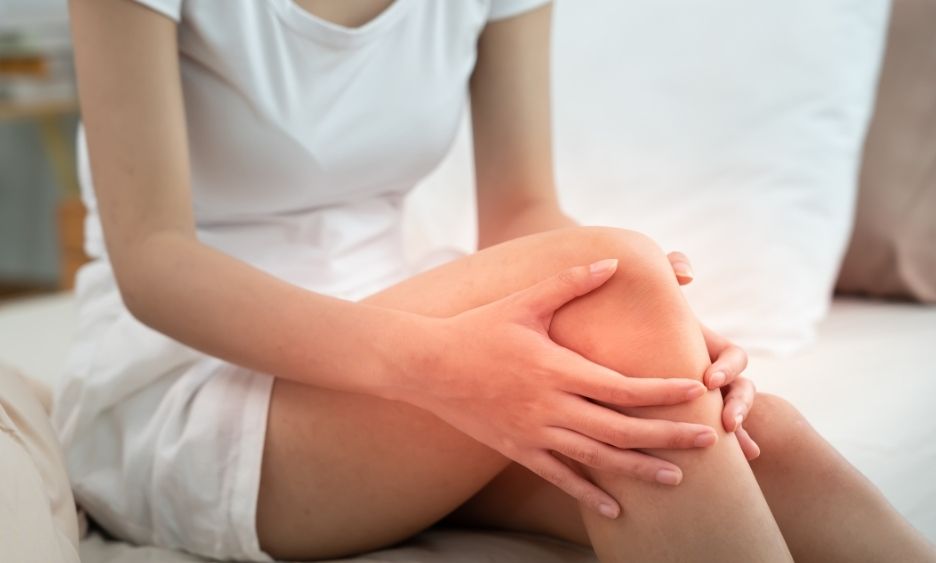
While athletes primarily use RLT for recovery, it offers additional advantages that support overall health and performance.
Joint Health and Injury Prevention
Regular RLT sessions improve tissue resilience and joint flexibility. Enhanced collagen production strengthens tendons and ligaments, reducing the likelihood of overuse injuries.
Improved Sleep and Energy Levels
Red light exposure can regulate circadian rhythms by stimulating melatonin production, helping athletes get better quality sleep. Adequate sleep is essential for muscle repair, energy restoration, and mental focus.
Mental Recovery and Stress Reduction
RLT has subtle effects on mood and mental well-being. By reducing inflammation and oxidative stress, the body experiences less fatigue, improving mental clarity and focus during training and competitions.
How to Use Red Light Therapy Safely and Effectively
Although RLT is generally safe, following guidelines ensures optimal results and prevents potential side effects.
Eye Protection and Skin Sensitivity
- Never stare directly into high-powered red light sources.
- Use protective goggles if recommended by the device manufacturer.
- Start with shorter sessions to monitor skin response, especially for sensitive skin.
Contraindications
- Avoid use in areas with active cancer or open wounds unless supervised by a professional.
- People taking photosensitive medications should consult a healthcare provider.
Signs of Overuse
- Mild redness or warmth is normal.
- Excessive exposure may cause irritation or discomfort. Reduce session time if this occurs.
Integrating Red Light Therapy Into Your Training Routine
To maximize benefits, RLT should complement traditional recovery methods.
Combining with Stretching, Nutrition, and Rest
- Stretching reduces muscle tightness and improves flexibility.
- Proper nutrition, especially protein intake, supports muscle repair.
- Adequate rest ensures recovery processes continue optimally.
Sample Weekly Recovery Plan for Athletes
| Day | Recovery Method | RLT Use |
| Monday | Strength Training + Stretching | 15-min post-workout |
| Tuesday | Cardio + Mobility | 10-min post-workout |
| Wednesday | Rest/Light Recovery | 20-min full-body session |
| Thursday | High-Intensity | 15-min post-workout |
| Friday | Strength Training + Stretching | 15-min pre-workout |
| Saturday | Endurance Training | 10-min post-workout |
| Sunday | Full Rest | Optional maintenance |
Tracking Recovery Progress
- Monitor muscle soreness levels daily.
- Track performance metrics like endurance, strength, and speed.
- Note any changes in sleep quality or energy levels.
Take Your Recovery to the Next Level with Red Light Therapy Photobiomodulation (PBM)
Red light therapy is transforming sports recovery. Backed by scientific research, it reduces muscle soreness, improves circulation, accelerates tissue repair, and supports joint health, making it an invaluable tool for athletes at every level. Whether you’re a professional competitor, a weekend warrior, or a dedicated fitness enthusiast, incorporating RLT into your recovery routine can help you train smarter, recover faster, and perform at your peak.
With consistent use, proper safety precautions, and integration with stretching, nutrition, and rest, red light therapy offers a reliable, science-backed approach to long-term performance. Whole-body PBM solutions, such as the Hue Light Whole-Body PBM Treatment Device, make it simple to bring professional-grade recovery into your home or training facility.
Ready to experience the benefits of photobiomodulation? Start exploring whole-body PBM solutions today and unlock your full athletic potential.
